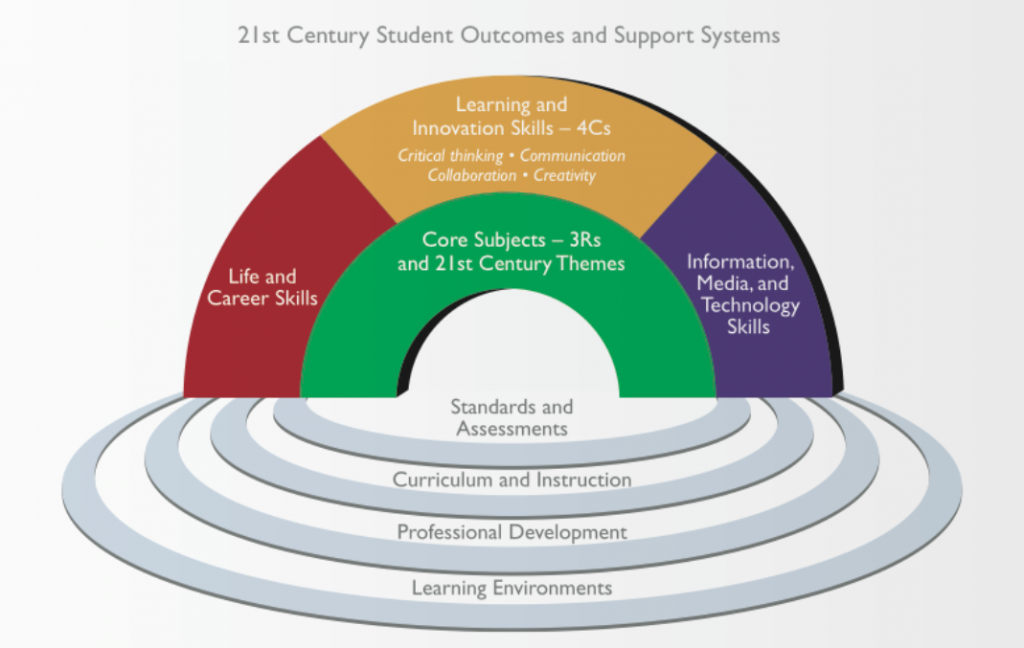
On Thursday, I gave a professional development session called “The 4 C’s and Beyond: Identifying the REAL Skills Our Students Need for the 21st Century.” The focus of the workshop was to explore why communication, collaboration, creativity, and critical thinking are so important in the digital age. We looked at some fascinating facts about the changing global economy and talked about how we can prepare our students for jobs that don’t yet exist. Then we examined 21st century student outcomes and discussed whether there are any “20th century” skills and teaching methods that are worth keeping. The goal was to help teachers examine their current instruction and determine which practices to maintain and which to adapt in their shift toward a 21st century classroom.
Here’s a thought that came to me when preparing this presentation–and that spurred some great conversations with teachers:
As educators, we all SAY that we value communication, collaboration, creativity, and critical thinking. But do we practice what we preach? Do our regular classroom routines show students that we value these traits?

Think about the kids in your class who excel at critical thinking. They’re the kids who questioneverything. “That doesn’t make sense! What do you mean by that? That’s not what you told us last week! But Mr. Smith said… And I think…” These conversations can drive teachers up the wall! But our response to them tells students whether or not we think critical thinking is an important part of the learning process or a distraction from it.
How about communication and collaboration skills? You know what that means…lots of talking! If we insist on having a quiet classroom in which students spend most of the day listening to us or working independently, are we giving them the opportunity to practice collaborating and communicating with their peers? Often, we expect students to possess these skills despite only giving them a few minutes each day to work on them. We can become easily frustrated by our students’ shortcomings and decide to give them less opportunities to talk and work together, rather than recognize that a disastrous group project experience means that students need moremodeling, support, and practice.
That brings us to creativity. The naturally creative kids in our classes think outside the box. We give directions for an activity and they do the exact opposite. They invent their own methods for everything from using the playground equipment to heading their papers. Do we shame kids for inventing their own ways of doing things? Or do we recognize their innovative thinking and help them channel it in appropriate ways?
Incorporating 21st century learning and innovation skills means much more than developing formal project-based learning experiences. We can give students the opportunity to practice–and send a strong message about the value of–these skills in our daily conversations and in the way we respond to kids’ behaviors.

Angela Watson
Founder and Writer
Sign up to get new Truth for Teachers articles in your inbox
OR

Join our
community
of educators
If you are a teacher who is interested in contributing to the Truth for Teachers website, please click here for more information.















